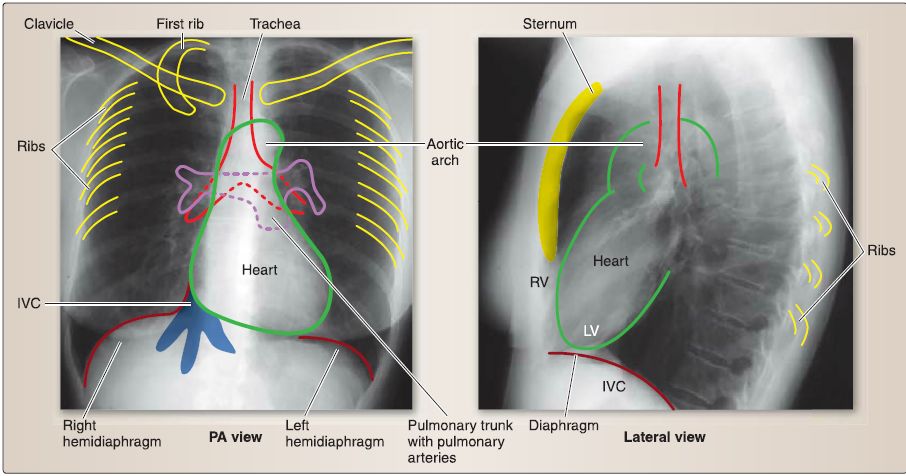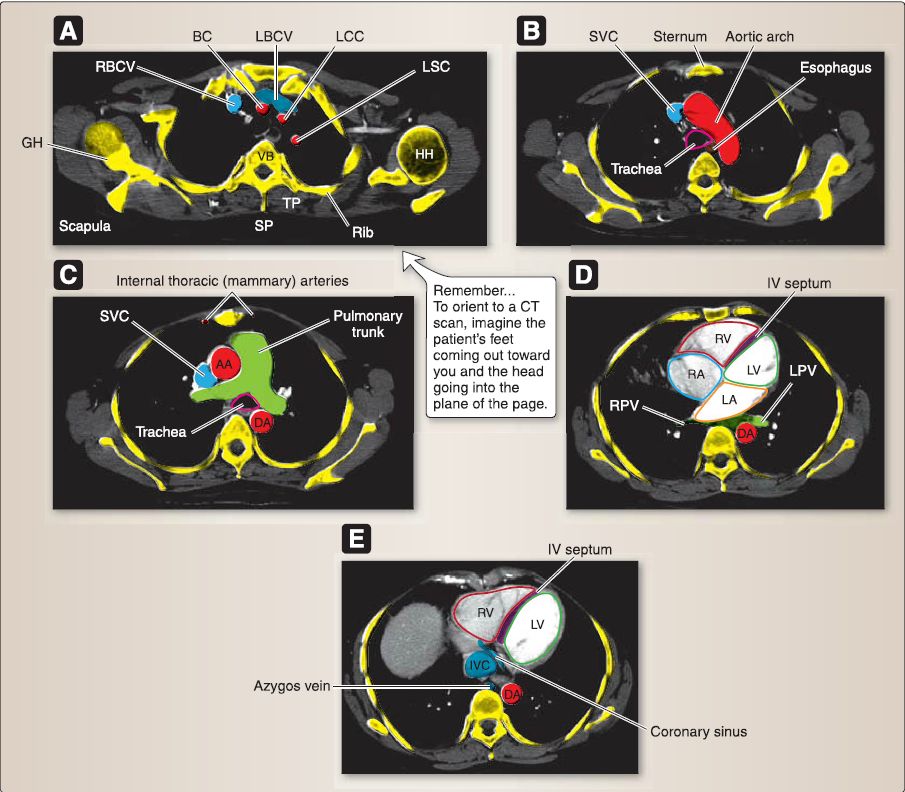


 النبات
النبات
 الحيوان
الحيوان
 الأحياء المجهرية
الأحياء المجهرية
 علم الأمراض
علم الأمراض
 التقانة الإحيائية
التقانة الإحيائية
 التقنية الحيوية المكروبية
التقنية الحيوية المكروبية
 التقنية الحياتية النانوية
التقنية الحياتية النانوية
 علم الأجنة
علم الأجنة
 الأحياء الجزيئي
الأحياء الجزيئي
 علم وظائف الأعضاء
علم وظائف الأعضاء
 الغدد
الغدد
 المضادات الحيوية
المضادات الحيوية|
Read More
Date: 16-7-2021
Date: 12-7-2021
Date: 5-11-2015
|
Thorax Imaging
The plain film chest radiograph is among the most frequently ordered diagnostic procedures (Fig. 1). Therefore, gaining a solid understanding of the normal anatomy of the lungs, pleurae, heart and bony structures of the thorax is essential for evaluating radiographs of this region. In general, a standard chest radiograph includes two views-PA (posterior/anterior) and lateral . This allows for proper localization of structures, foreign bodies, masses, etc.
CT scans of the thorax allow for a more three-dimensional view of the thoracic viscera (heart and lungs) and adjacent structures and may allow for better detection of pathology that could be missed in a plain film radiograph (Fig. 2). Interpretation of any chest radiograph requires an in-depth understanding of the anatomy of the thorax. Intravenous or oral contrast may be used to differentiate specific thoracic structures, especially vasculature.

Figure 1 :Plain film. IVC = inferior vena cava, LV = left ventricle, RV = right ventricle, PA = posterior anterior.

Figure 2 : CT axial images. A-E arranged from superior to inferior. AA= ascending aorta, BC =brachiocephalic artery, DA= descending aorta, GH = glenohumeral joint, HH = humeral head, IV = interventricular, IVG = inferior vena cava, LA = left atrium, LBCV = left brachiocephalic vein, LCC = left common carotid artery, LPV = left pulmonary vein, LSC = left subclavian artery, LV = left ventricle, RA= right atrium, RBCV = right brachiocephalic vein, RPV = right pulmonary vein, RV= right ventricle, SP = spinous process, SVC = superior vena cava, TP = transverse process, VB = vertebral body.



|
|
|
|
علامات بسيطة في جسدك قد تنذر بمرض "قاتل"
|
|
|
|
|
|
|
أول صور ثلاثية الأبعاد للغدة الزعترية البشرية
|
|
|
|
|
|
|
مدرسة دار العلم.. صرح علميّ متميز في كربلاء لنشر علوم أهل البيت (عليهم السلام)
|
|
|